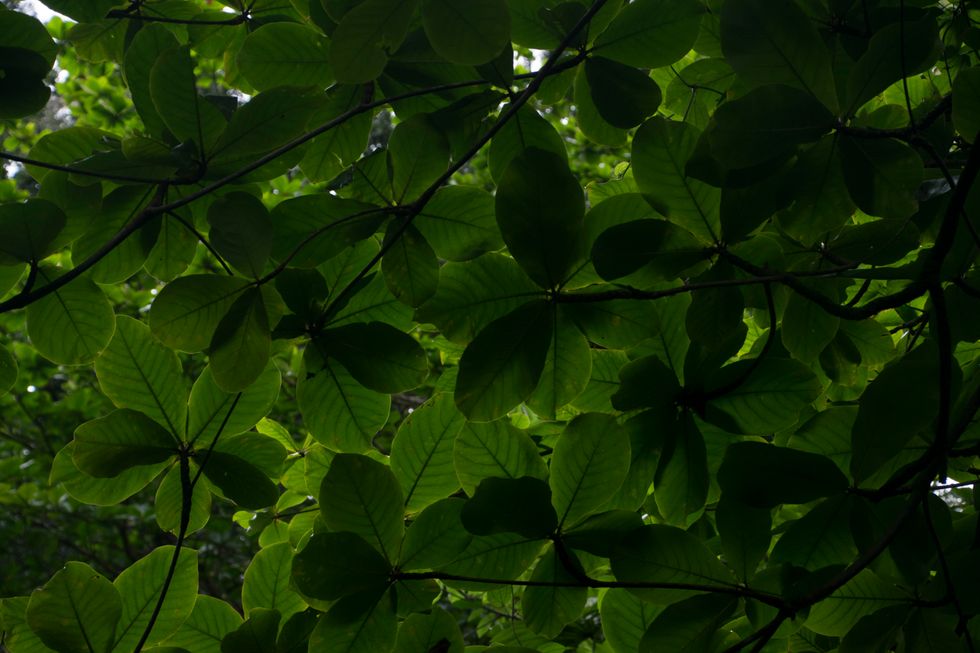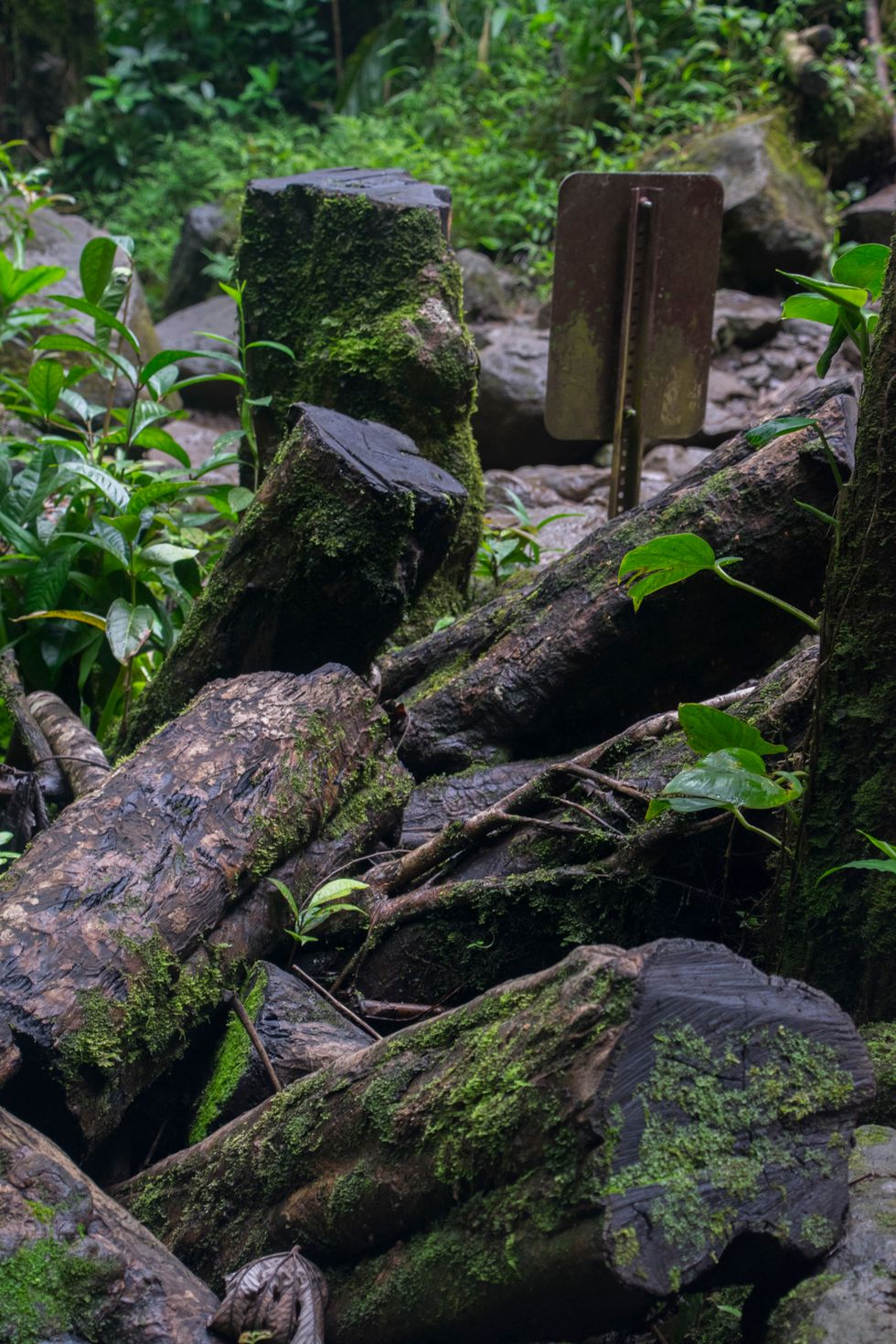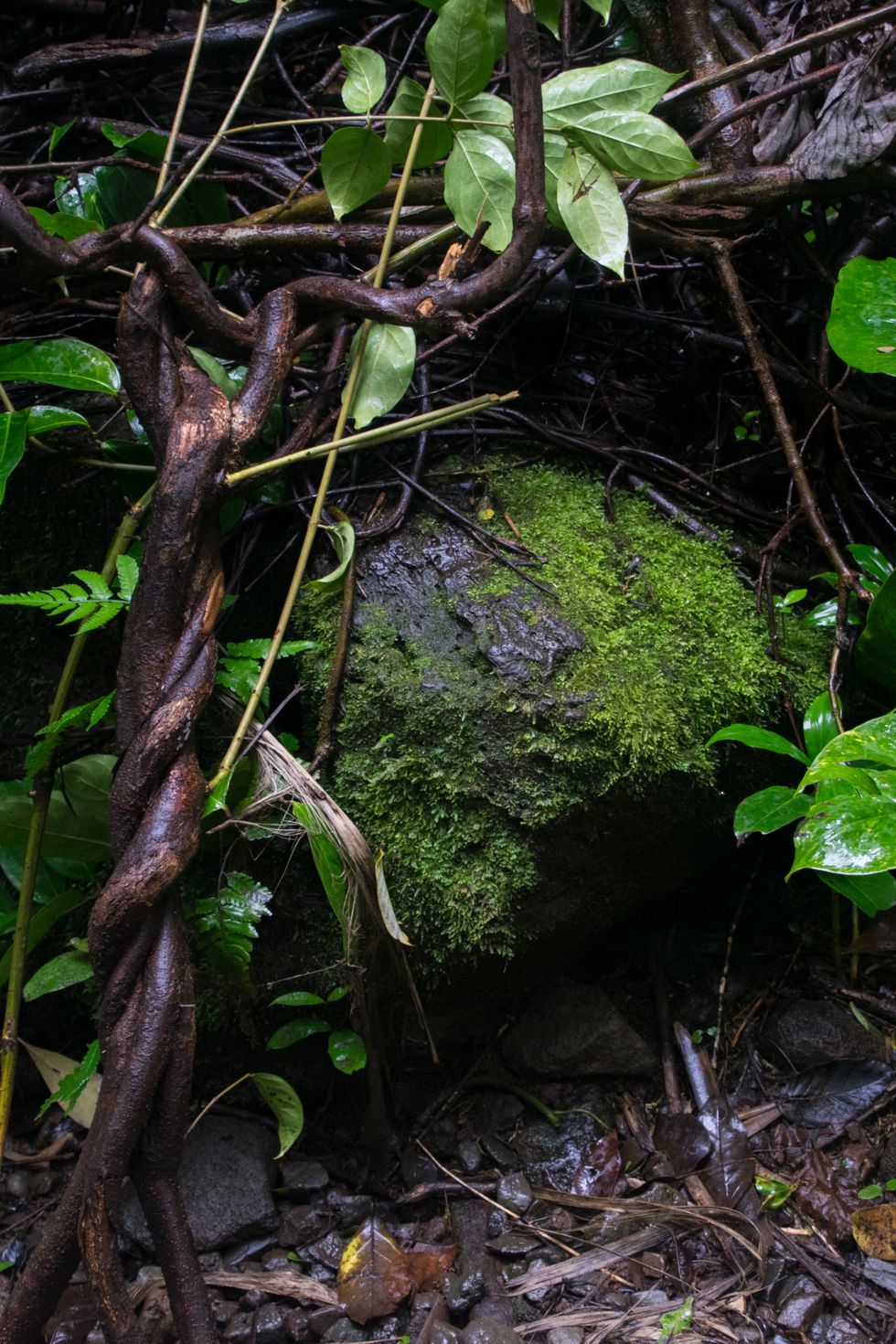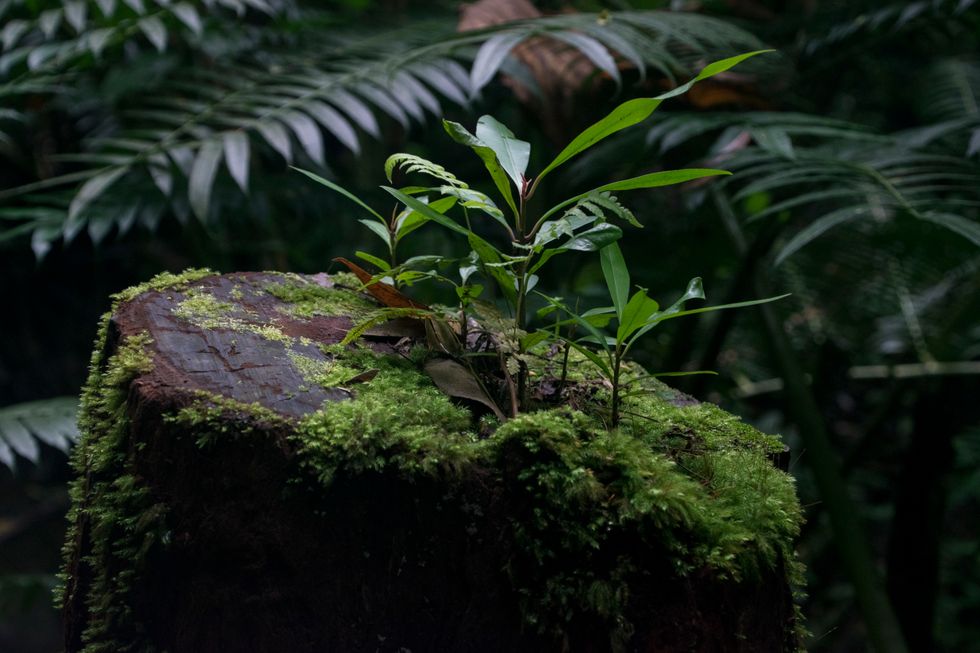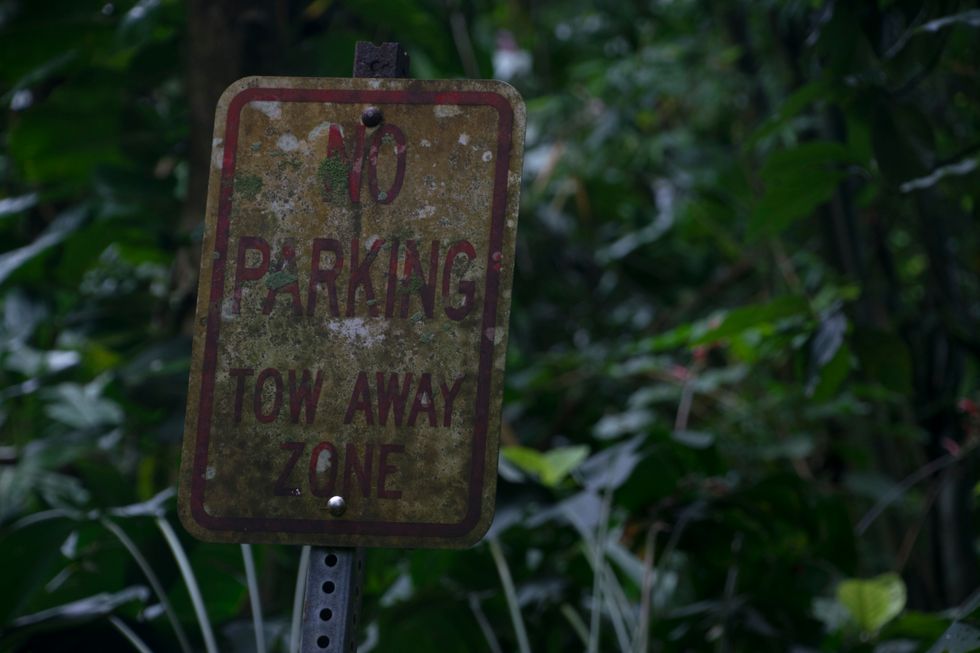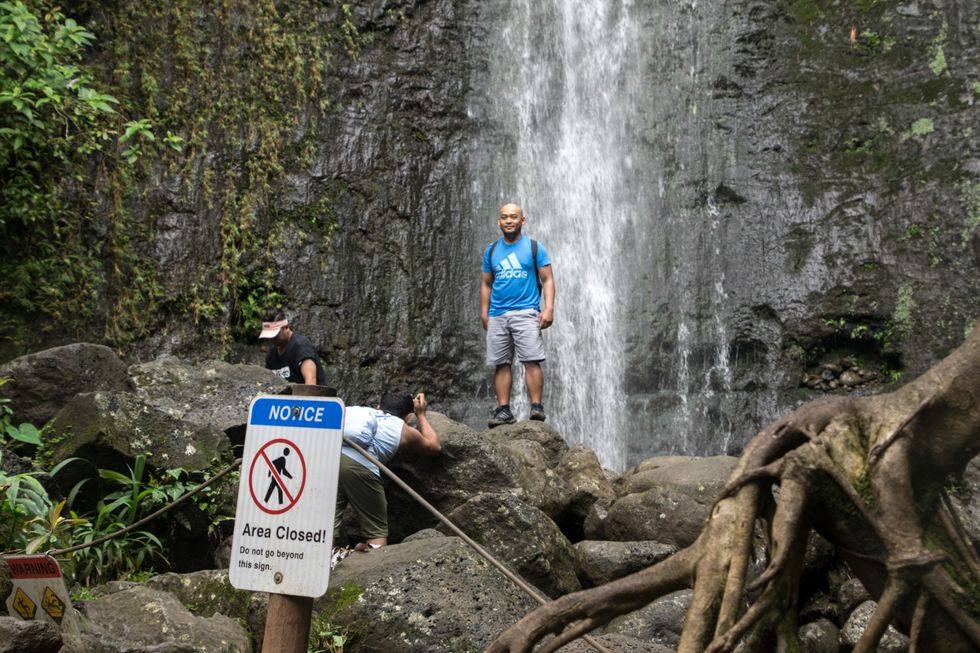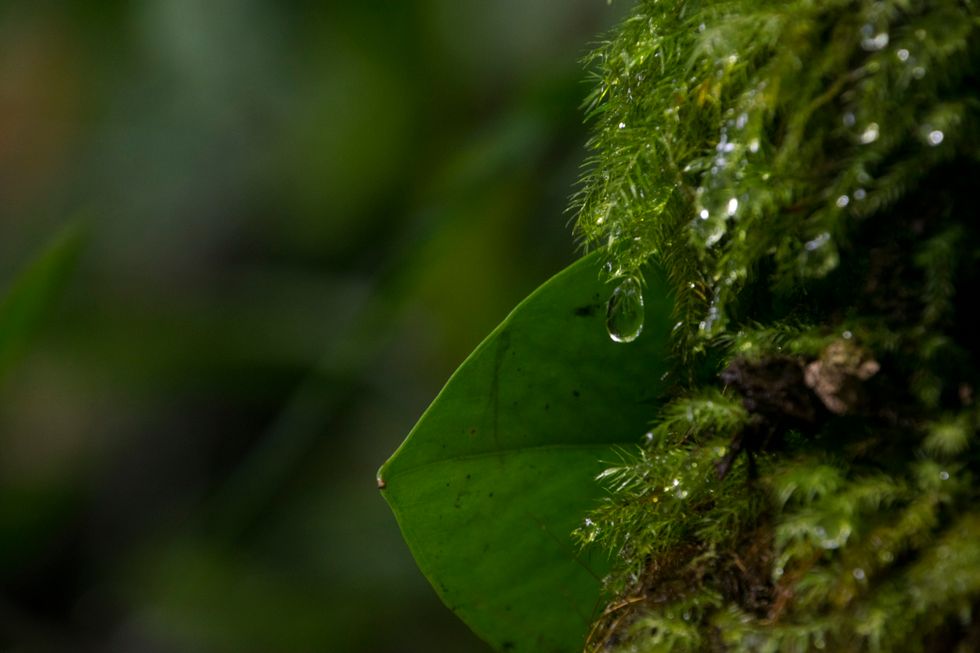As nice as Hawaii can be, it can be difficult to transition from street photography to nature photography. Opportunities for photographs don't ever just throw themselves at your feet. They require research, planning, and patience. Although street photography also can benefit from all these things, they are far less required. A city of 8 million people and a history as old as America affords much more condensed creative opportunities than an island of 1 million people full of buildings from the '60s and 70's.
Because it can be hard for me to step outside and be inspired by things I've seen every day for the last 13 years, I will be going on various hikes and trails around the island, and choosing pictures from them that I feel are representative of the experience.
This week, I went on a short, easy, and muddy trail that went through a rainforest, and ended at a waterfall.
Because of the constant rain, and erosion, many trees fall over. While this can be good ecologically for forests, it can be bad for hiking. Many trees are cut and stacked beside trails and are left to decompose naturally, with fungi and mosses slowly breaking them down.
Vines, as they grow, tend to twist as they move, to try and find a tree they can use to climb to sunlight. In that process, they can create dense jungle and foliage, in this photo, three vines seem to have started wrapping around themselves in their pursuit of the sun.
Many felled trees have sprouts growing out of them, speaking to the resiliency of trees. If the sprouts seen here are the tree re-growing itself (sometimes other plants leech the nutrients instead) the roots will likely grow out and completely cover the original stump.
I particularly like this photo because of how much it reminds me of New York. Buildings and subway stations tend to build up black, sooty pollution, and in this case, almost the inverse has occurred. Plant matter, dirt, and mosses have started to overcome this sign.
With many trails, there are sections that are maintained, and sections that are not maintained. Often the trails are clear, and unsafe areas are designated with signs and rope. Few people heed them. While it can be very tempting to get up close to small streams, flash floods are a very potent danger. Even if the rain seems light, streams collect all the rain that's deposited on the mountains, and all of that square footage adds up.
Because of the canopy of leaves above, the trail was relatively dark and shady. Mud tends to stay around for a while, and water droplets like this one are often caught by plants and held, evaporating slowly enough to keep the air very humid.
The hike was relatively easy. The whole hike is only about a mile and a half long, but it does get very muddy and slippery, especially after heavy rain. Going alone on this hike is completely safe, however, due to the number of people who are around. If you're looking for solitude, this is not the hike for you.

